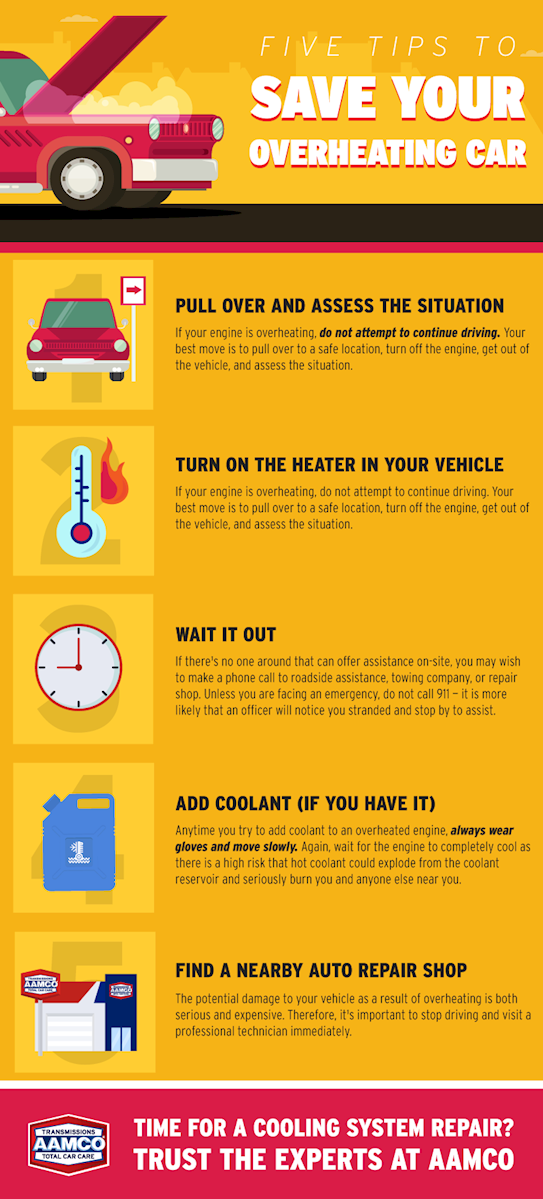
Fiat 500 Engine Overheating: Causes and How to Prevent It

The Fiat 500 is a popular city car known for its stylish design and compact size. However, like any other vehicle, it can be prone to engine overheating issues. Engine overheating can cause significant damage to the engine and other components, leading to costly repairs. Understanding the causes of engine overheating in the Fiat 500 is crucial to preventing it. In this article, we will explore the common causes of engine overheating in the Fiat 500 and provide tips on how to prevent it, ensuring your vehicle runs smoothly and efficiently. Regular maintenance is key.
- Fiat 500 Engine Overheating: Understanding the Risks and Taking Preventive Measures
- How can I stop my engine from overheating?
- What is the common engine problem in the Fiat 500?
- How to solve engine overheating problem?
- What does a high coolant temperature warning on a Fiat 500 mean?
- Frequently Asked Questions
Fiat 500 Engine Overheating: Understanding the Risks and Taking Preventive Measures
The Fiat 500 is a beloved city car known for its stylish design and fuel efficiency. However, like any vehicle, it's not immune to issues such as engine overheating. Engine overheating can lead to significant damage, including costly repairs and potentially rendering the vehicle undrivable. Understanding the causes and taking preventive measures is crucial for maintaining the health and longevity of your Fiat 500's engine.
Causes of Engine Overheating in Fiat 500
Engine overheating in the Fiat 500 can be attributed to several factors. A primary cause is low coolant levels, which can result from leaks in the cooling system. Other causes include a faulty thermostat that doesn't allow the coolant to circulate properly, a malfunctioning radiator fan that fails to cool the coolant, and clogged radiator that obstructs the flow of coolant. Regular checks can help identify these issues before they lead to overheating.
Symptoms to Watch Out For
Recognizing the symptoms of engine overheating is vital for taking prompt action. Key indicators include the temperature gauge rising above normal, steam or smoke coming from the hood, and the illumination of the engine warning light on your dashboard. If you notice any of these signs, it's essential to pull over safely and turn off the engine to prevent further damage.
Preventive Measures and Maintenance
Preventing engine overheating involves regular maintenance and checks. Ensure your coolant level is at the recommended level, inspect the cooling system for signs of leaks, and check the radiator and hoses for damage or blockages. Regularly servicing your Fiat 500, including replacing the coolant as per the manufacturer's schedule, can significantly reduce the risk of engine overheating.
| Cause | Description | Preventive Measure |
|---|---|---|
| Low Coolant Levels | Leaks in the cooling system | Regularly check coolant levels and inspect for leaks |
| Faulty Thermostat | Prevents proper coolant circulation | Have the thermostat inspected and replaced as needed |
| Malfunctioning Radiator Fan | Fails to cool the coolant | Check the radiator fan's operation and replace if faulty |
| Clogged Radiator | Obstructs coolant flow | Regularly inspect and clean the radiator |
How can I stop my engine from overheating?

To prevent your engine from overheating, it's crucial to understand the factors that contribute to this issue. Engine overheating occurs when the engine's cooling system fails to dissipate heat effectively, causing the engine temperature to rise beyond its normal operating range. Several factors can lead to engine overheating, including low coolant levels, leaks in the cooling system, a malfunctioning thermostat, or a faulty radiator fan.
Regular Maintenance Checks
Regular maintenance is key to preventing engine overheating. This involves checking the coolant level regularly and topping it off as necessary. It's also important to inspect the cooling system for leaks, as even small leaks can cause significant problems over time. Furthermore, ensuring that the radiator cap is in good condition and functions properly is vital, as it maintains the system's pressure.
- Check coolant level regularly and top it off as necessary.
- Inspect the cooling system for any signs of leaks.
- Ensure the radiator cap is in good condition.
Cooling System Inspection
Inspecting the cooling system is a critical step in preventing engine overheating. This includes checking the condition of the radiator hoses, as cracked or damaged hoses can lead to leaks and reduced cooling efficiency. The radiator itself should also be inspected for any blockages or damage. Additionally, ensuring that the radiator fan is working correctly is essential, as it plays a crucial role in cooling the engine, especially when the vehicle is stationary or moving at low speeds.
You may be interested in reading Troubleshooting Fiat 500 Electrical Problems: A Comprehensive Guide
Troubleshooting Fiat 500 Electrical Problems: A Comprehensive Guide- Inspect radiator hoses for any signs of damage or wear.
- Check the radiator for blockages or damage.
- Ensure the radiator fan is working correctly.
Addressing Issues Promptly
If you notice any signs of engine overheating, such as the temperature gauge rising above normal or steam coming from the hood, it's essential to address the issue promptly. Pulling over to a safe location and turning off the engine can help prevent further damage. Checking the coolant level and looking for leaks can provide insights into the cause of the problem. In many cases, seeking the assistance of a professional mechanic is advisable to diagnose and repair the underlying issue.
- Pull over and turn off the engine if you notice signs of overheating.
- Check the coolant level to identify potential causes.
- Seek professional assistance to diagnose and repair the issue.
What is the common engine problem in the Fiat 500?

The Fiat 500 is a popular city car known for its stylish design and fuel efficiency. However, like any other vehicle, it is not immune to engine problems. One of the common engine issues in the Fiat 500 is related to its Multiair engine technology, which can be prone to various faults.
Engine Oil Leaks
Engine oil leaks are a common issue in the Fiat 500, particularly in models with the Multiair engine. This problem can be caused by worn-out engine gaskets or seals, which can lead to oil leakage. Regular maintenance is essential to prevent oil leaks.
- Check engine oil levels regularly to identify any potential leaks.
- Inspect the engine for signs of oil leakage, such as oil spots or drips.
- Replace worn-out gaskets or seals to prevent further oil leakage.
Faulty Multiair Engine Technology
The Multiair engine technology used in the Fiat 500 can be prone to faults, leading to issues such as reduced engine performance and rough idling. This technology allows for variable valve timing, but it can be complex and prone to problems.
- Faulty hydraulic components can cause issues with the Multiair system.
- Software updates may be necessary to resolve issues with the engine control unit.
- Regular maintenance is crucial to prevent problems with the Multiair system.
Timing Chain Issues
Some Fiat 500 models have been known to experience timing chain issues, which can cause engine problems. A faulty timing chain can lead to engine stalling, rough idling, or even engine failure.
- Listen for unusual engine noises that may indicate a timing chain issue.
- Check for signs of wear on the timing chain and its components.
- Replace the timing chain at the recommended interval to prevent engine damage.
How to solve engine overheating problem?

To solve an engine overheating problem, it's crucial to first identify the root cause, as the solution varies depending on the underlying issue. Engine overheating can be due to a variety of factors including low coolant level, malfunctioning thermostat, faulty radiator, or issues with the cooling system's circulation.
Causes and Initial Checks
The initial step in addressing engine overheating involves checking the basics of the cooling system. This includes verifying the coolant level, inspecting for leaks, and ensuring the radiator cap is functioning correctly. A thorough inspection can reveal simple issues that can be quickly addressed.
You may be interested in reading Troubleshooting Fiat 500 Electrical Problems: A Comprehensive Guide
Troubleshooting Fiat 500 Electrical Problems: A Comprehensive Guide Fixing Oil Leaks in Your Fiat 500: Step-by-Step Instructions
Fixing Oil Leaks in Your Fiat 500: Step-by-Step Instructions- Check the coolant level and top it off if necessary, using the correct type of coolant for your vehicle.
- Inspect the cooling system for leaks, including hoses, radiator, and water pump.
- Ensure the radiator cap is in good condition and sealing properly.
Diagnosing Specific Issues
If initial checks don't reveal the problem, further diagnosis is needed to identify more complex issues. This may involve testing the thermostat, checking the operation of the cooling fans, and inspecting the radiator for blockages. Modern vehicles may also require the use of specialized tools to diagnose issues with electronic cooling system components.
- Test the thermostat to ensure it's opening and closing at the correct temperatures.
- Verify the cooling fans are operating correctly, both in terms of turning on at the right temperature and spinning at the correct speed.
- Check the radiator for any blockages or damage that could impede its ability to dissipate heat.
Repairing and Replacing Components
Once the specific cause of the overheating is identified, the necessary repairs can be made. This might involve replacing a faulty thermostat, repairing or replacing the radiator, or fixing leaks in the cooling system. In some cases, more extensive repairs such as replacing the water pump or head gasket may be required if the overheating has caused significant engine damage.
- Replace any faulty components such as the thermostat, radiator, or water pump as needed.
- Repair any leaks found in the cooling system, which may involve replacing hoses or tightening loose connections.
- Address any engine damage resulting from overheating, such as warped heads or cracked engine blocks, which may require professional mechanical repair.
What does a high coolant temperature warning on a Fiat 500 mean?

A high coolant temperature warning on a Fiat 500 indicates that the engine coolant has exceeded a safe operating temperature. This warning is usually triggered when the coolant temperature reaches a certain threshold, typically around 120°C (248°F). If the warning is displayed, it is essential to take immediate action to prevent damage to the engine.
Causes of High Coolant Temperature
The causes of high coolant temperature in a Fiat 500 can be attributed to various factors. Some of the possible reasons include a malfunctioning thermostat, a leak in the cooling system, or a faulty coolant temperature sensor.
- A faulty thermostat can prevent the coolant from circulating properly, leading to a rise in engine temperature.
- A leak in the cooling system can cause the coolant level to drop, resulting in inadequate cooling and a subsequent increase in engine temperature.
- A malfunctioning coolant temperature sensor can provide incorrect readings, triggering the warning light unnecessarily or failing to alert the driver to a genuine issue.
Symptoms of High Coolant Temperature
When the coolant temperature is too high, the Fiat 500 may exhibit several symptoms. These can include the illumination of the temperature warning light on the dashboard, a rise in engine temperature gauge reading, or in severe cases, the engine may overheat, causing damage to the engine or other components.
- The temperature warning light will typically be accompanied by a message on the dashboard display, alerting the driver to the issue.
- The engine may start to run rough or lose power as it attempts to protect itself from the high temperatures.
- In extreme cases, the engine may overheat, leading to costly repairs or potentially causing the engine to seize.
Actions to Take When Warned of High Coolant Temperature
If the high coolant temperature warning is displayed on a Fiat 500, the driver should take immediate action to prevent damage. The first step is to pull over to a safe location as soon as possible and turn off the engine.
- Allow the engine to cool before checking the coolant level to ensure it is at the recommended level.
- Inspect the cooling system for any signs of leaks or damage, and top up the coolant as necessary.
- If the issue persists after checking the coolant level and inspecting the cooling system, it is recommended to consult a qualified mechanic or a Fiat dealership for further diagnosis and repair.
Frequently Asked Questions
What are the common causes of Fiat 500 engine overheating?
The Fiat 500 engine can overheat due to several reasons, including low coolant levels, a faulty thermostat, a malfunctioning radiator fan, or a clogged radiator. Other causes may include a leaking head gasket, a cracked engine block, or a faulty water pump. Regular maintenance can help identify these issues before they cause overheating. Checking the cooling system regularly can prevent engine damage.
How can I prevent my Fiat 500 engine from overheating?
To prevent engine overheating, regularly check the coolant level and top it off as needed. Inspect the cooling system for leaks and ensure the radiator fan is working properly. Replace the thermostat and water pump at the recommended intervals. Avoid driving in extreme temperatures and keep an eye on the temperature gauge. Regular maintenance can help prevent overheating issues and prolong the life of your engine.
You may be interested in reading Troubleshooting Fiat 500 Electrical Problems: A Comprehensive Guide
Troubleshooting Fiat 500 Electrical Problems: A Comprehensive Guide Fixing Oil Leaks in Your Fiat 500: Step-by-Step Instructions
Fixing Oil Leaks in Your Fiat 500: Step-by-Step Instructions Resolving Fiat 500 Suspension Noises: Tips and Tricks
Resolving Fiat 500 Suspension Noises: Tips and TricksWhat are the signs of engine overheating in a Fiat 500?
Signs of engine overheating in a Fiat 500 include the temperature gauge rising above the normal range, steam or smoke coming from the hood, or a warning light on the dashboard. You may also notice a decrease in engine performance or a strange smell. If you notice any of these signs, pull over and turn off the engine to prevent further damage.
Can a faulty temperature gauge cause engine overheating in a Fiat 500?
A faulty temperature gauge can indirectly contribute to engine overheating by failing to alert the driver to rising engine temperatures. If the gauge is not working correctly, you may not be aware of an issue until it's too late. Regularly checking the gauge and monitoring engine temperature can help identify potential problems before they cause damage.

If you want to know other articles similar to Fiat 500 Engine Overheating: Causes and How to Prevent It you can visit the category Common Problems.
Deja una respuesta






More content of your interest